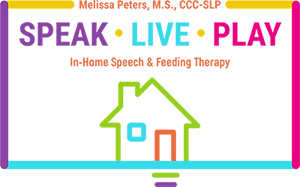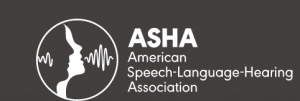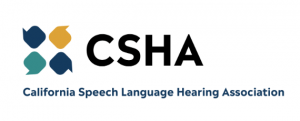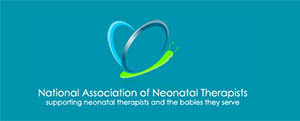AAC For Children
Augmentative and Alternative Communication (ACC) is a way for children and young people to communicate when they have trouble speaking or understanding words. It involves using objects, symbols, charts, photographs, signs, and electronic aids to help them express themselves. ACC can change as children grow older or their language skills develop.
ACC for children is super helpful! It uses cool things like symbols, charts, and even electronic aids to help kids talk when talking is tough. Some kids need more ACC, some need less, and that can change as they get older. But no matter what, ACC is always there to help them communicate!
Why Use AAC For Children?
AAC may be used for a variety of reasons:
- As a temporary solution or a helpful tool, ACC (Augmentative and Alternative Communication) can assist children in expressing themselves while they are still improving their speech and language skills. ACC for children provides a way to communicate using different methods, like pictures, signs, or technology. It’s like having a special bridge that helps them connect with others until they can speak more easily. This approach is important for their growth and development, and it’s a great way for them to learn and interact with the world around them.
- To assist children in understanding spoken language, we use a variety of techniques. These techniques, known as Augmentative and Alternative Communication (ACC), help children express themselves and communicate effectively. ACC for children is designed specifically to support their unique needs and abilities. By incorporating ACC strategies into their daily routine, children can better understand and participate in conversations, enhancing their communication skills and overall development.
- To help children improve their communication skills, it’s important to use additional tools like augmentative and alternative communication (ACC) alongside speech. ACC can be used to assist children in expressing themselves and making sure they are understood. Think of it as using special tools to make sure you can communicate even better! ACC is specifically designed for children, and it can be a fun and helpful way to express yourself. So, whether you’re talking, using ACC, or a combination of both, you’re finding unique and creative ways to communicate! Remember, ACC for children is all about making sure you can express yourself in the best possible way.
- As an alternative way to communicate, some children may face challenges with spoken communication due to their difficulties. However, with the help of Augmentative and Alternative Communication (AAC), they can find their voice and gain a sense of control over their environment. AAC provides a means for children to express themselves effectively, even if they struggle with verbal communication. By using AAC, children can communicate their thoughts, needs, and emotions in a way that is unique to them. This technology is specifically designed to support children who may require additional assistance in expressing themselves verbally. AAC for children is a powerful tool that empowers them to communicate and participate more fully in their daily lives.
- As a helpful tool for enhancing language skills, let me explain how it works. It gives children the chance to practice and improve their language abilities by gradually progressing from making sounds and using single words to forming actual sentences. This process helps them become more confident in expressing themselves and communicating effectively. It’s like a fun adventure where they can explore new words and phrases, like a secret code that unlocks their language superpowers! If you want to boost your language skills, give ACC (Augmentative and Alternative Communication) a try. It’s specifically designed to empower children in their language journey. Let’s embark on this exciting ACC adventure together!
Types of AAC
Suppose you or someone you care about needs help speaking. In that case, different types of Augmentative and Alternative Communication (AAC) can be helpful. AAC includes aided systems, which use tools or devices, and unaided systems, which do not require any external tools. Depending on the specific speech disorder, a person may use one or both of these options. AAC is especially useful for children who need assistance with communication. By using AAC, children can express themselves and communicate effectively. If you are looking for AAC options for children, consider exploring aided and unaided systems to find the best fit. Remember, AAC can make a big difference in helping individuals with speech difficulties express their thoughts and needs.
Unaided Systems
- The unaided AAC system, also known as Augmentative and Alternative Communication (ACC), is a cool way to communicate without words. Instead, you use gestures, facial expressions, body language, and signs. It’s like having your secret language! By learning and using these special ways to communicate, you can talk to your friends and family uniquely and awesomely. ACC is great for children, too! So, if you want to learn how to communicate like a pro, try using ACC and have fun while doing it!
Aided Systems
- Aided AAC systems are all about using special tools or devices to help people communicate. There are two types of aided systems: basic and high-tech. Basic systems use simple tools like a pen and paper. With these tools, a person can point to letters, pictures, or words to say what they want. One common basic system is the AAC board, which you can find in homes and hospitals. Augmentative and Alternative Communication (AAC) is a powerful method that empowers individuals, both children and adults, to communicate and express themselves effectively. It’s especially helpful for children who have trouble speaking. So, if you know someone who needs help communicating, remember that AAC can make a big difference in their lives!
The special board, known as an ACC (Augmentative and Alternative Communication) board, is a high-tech device that helps patients communicate with their caregivers and nurses during their hospital stay. These devices, like computers and speech-generating devices, have many advantages. They allow individuals to have fun with words and even speak in different languages!
Examples Of ACC For Your Child
Some examples of different communication systems include:
- Eye pointing frames: used with photographs, line drawings, symbols, etc.
- Communication books or charts.
- Electronic communication aids: Talk, Bigmac, Messagemate, Tech speak, Dynavox, iPads set up with communication software.
- British Sign Language or signing systems such as Makaton.
- Switches.
- PODD books.
- Picture Exchange Communication Systems (PECS).
Benefits of AAC For Children
Children with various difficulties can greatly benefit from different types of AAC, also known as Augmentative and Alternative Communication. It’s important to understand that not all children will need electronic devices. Instead, many can benefit from signing, symbols, and communication books. However, some children can benefit from more advanced technology. These integrated systems allow them to use personal computers. AAC for children is a powerful tool that helps them express themselves and communicate effectively. By incorporating AAC into their daily lives, children can overcome communication challenges and thrive.
The Advantages Of AAC for Children
At Speak Live Play, our primary objective is to assist patients in reclaiming their capacity to speak and communicate with the utmost effectiveness. This holds significant importance across all cases, although outcomes may differ based on the severity and nature of the impairment. Our therapists carefully consider multiple factors when designing a therapy program and choosing the right AAC options for each patient. Since every patient is unique, we create individualized programs tailored to their specific needs. This includes children who may benefit from AAC. With our specialized approach, we aim to make communication accessible and enjoyable for all!
Here are some of the factors when formulating a therapy program:
Complete Loss of Voice
- Every person has the right to express themselves, ask questions, share their feelings, make choices, and build connections. Unfortunately, certain conditions like traumatic brain injuries, cancer, and other mental impairments can cause a complete loss of voice. That’s where Augmentative and Alternative Communication (AAC) comes in. AAC provides a different way to communicate, helping individuals regain control, independence, and a sense of self. It allows them to stay connected with their loved ones and friends. AAC is especially beneficial for children who may need extra support in expressing themselves. By using AAC, children can continue interacting and staying engaged. It’s an amazing tool that helps them communicate and be understood. Remember, AAC is not just for children; it can also benefit adults who face similar challenges. So, if you or someone you know is looking for a way to communicate effectively, consider exploring the world of AAC. It’s a powerful tool that can make a big difference in people’s lives.
Temporary Loss of Voice
- Sometimes, when someone has brain damage, they may lose their ability to speak. But don’t worry, with therapy and other treatments, they can learn how to speak again! It takes time and effort, but there’s something called AAC that can help. AAC stands for Augmentative and Alternative Communication. It’s a special way for people to express themselves before they can speak again. It could be better than speaking, but it helps them connect with family and friends, make decisions, and ask questions. AAC is temporary, and once they can speak again, they won’t need to use it. It’s really helpful, especially for children who need AAC. So, don’t worry; AAC is here to help!
Occasional Language Reinforcement
- Sometimes, when someone has a stroke or brain injury, their ability to speak can be affected. They may still be able to think, but their words might not come out clearly. This can happen to people with conditions like apraxia or dysarthria. That’s where AAC (Augmentative and Alternative Communication) comes in! AAC helps people, especially children, to communicate clearly when they have trouble speaking. It’s a great option that can make a big difference! So, if you ever come across someone who needs help speaking, remember that AAC can be a wonderful solution.
Why Speak Live Play?
Losing the ability to speak can take time and effort. It makes it hard to share thoughts, make choices, and ask questions. But don’t worry, it’s not the end. Speak Live Play is here to help! We have awesome speech therapists who are experts in helping you talk again and connect with your loved ones. It’s especially important for kids who have trouble speaking or swallowing to get special attention. Our therapists are really good at something called Augmentative and Alternative Communication (AAC), which helps with different speech problems. So, if you need help with speaking, reach out to us! We’ll be happy to be a part of your journey to getting better. Remember, Speak Live Play is here for you!



